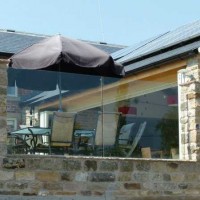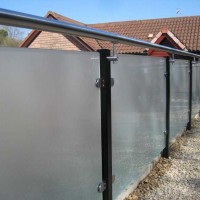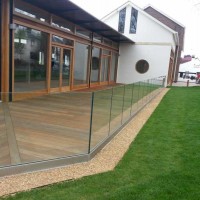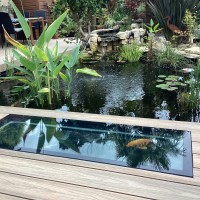High Quality Glass
Glass standards
The Glass and Glazing Federation (GGF) have defined a glazing acceptability standard known as the GGF Visual quality standard for installed insulating glass units constructed from flat transparent glass. This standard identifies all common visual issues found in glazing units and clarifies how imperfections should be assessed and what the acceptability for that standard is.
Exceeding glass standards
At Dio-Met we are selling a premium product and identified that this acceptability standard does not meet the requirements of our customers. Therefore, we have produced a more stringent standard for us to adhere to giving our customers confidence that they will receive a glazing system that meets the same standard as the rest of our product. This acceptability standard is an additional guarantee on top of the GGF standard providing you with the utmost confidence that the products you receive will be of the highest quality.
The checking process
1. Transparent glass used in the manufacture of insulating glass units is identical to that used traditionally for single glass and will, therefore, have a similar level of quality.
2. Both panes of the sealed unit shall be viewed at right angles to the glass from the room side at a distance of 1.5 metres in natural daylight and not in direct sunlight (a light box may be used for inspection as an alternative to natural daylight. The primary area to be viewed is the normal vision area, with the exception of a 25mm wide band around the perimeter of the unit. The secondary area to be viewed is the 25mm edge band.
3. Flat transparent glass, including laminated or toughened (tempered) glass shall be deemed acceptable if the following phenomena are neither obtrusive nor bunched: Seeds no larger than 1mm (1.5mm in the secondary area); bubbles or blisters; hairlines or blobs; fine scratches not more than 20mm long; minute embedded particles; Edge damage which does not affect the structural integrity of the glass. The presence of the following phenomena shall be deemed unacceptable: Scratches within the cavity; Dust/ debris from the spacer bar or integral bar cutting process should not be visible within the cavity; Scuffing or scratching to lead work; other extraneous materials within the cavity (eg hair, sealant etc), seeds larger than 1mm (1.5mm in the secondary area) Obtrusiveness of blemishes shall be judged by looking through the glass, not at it, under lighting conditions as described in section 2.
4. When thermally toughened (tempered) glass is viewed by reflection, the effect of the toughening process may be seen under certain lighting conditions. The visibility of surface coloration or patterns (Anisotropy) does not indicate deterioration in the physical performance of the toughened glass and the presence of this phenomenon will not be cause for rejection. Because of the nature of the toughening process, distortion can be introduced. Such distortion will be accentuated when the glass is viewed in reflection or incorporated in insulating glass units. The distortion will be deemed unacceptable if Newton’s Rings are visible. Other phenomena shall be assessed as per 3. Toughened glass is prone to bow and this should not exceed 2mm per linear m or localised bow should not exceed 0.5mm per 300mm.
5. Visible double reflection can occur under certain lighting aspect conditions, especially when viewed from an angle. This is an optical phenomenon arising from multiple surface reflections in sealed units.
6. The manufacture of flat laminated glass does not usually affect the visual quality of the glass incorporated in insulating glass units. However, the faults generally accepted in paragraph 3 may be increased in number by the fact that several layers of glass are used in the production of laminated glass. When viewed under certain light conditions, insulating glass units incorporating clear or tinted flat laminated glass may show a distortion effect caused by reflection on the multiple surfaces of the component of the laminated glass.
7. Safety glass will be manufactured with a visible stamp to comply with BS EN 6262-4:2005 and Part N of the Building Regulations. NOTE: The above criteria do not apply to Patterned Glass as, due to the method of manufacture, imperfections such as seeds and bubbles are deemed to be perfectly acceptable. Where sandblasted glass is supplied the blasted face will normally be positioned to the inside of the unit. When viewed from1.5m the sandblasted finish should appear consistent and free from hand/finger marks.
Further reading :
Choosing a balustrade supplier
Handrail and balustrade component parts
Privacy screen balustrade Sheffield
Please login to Comments




